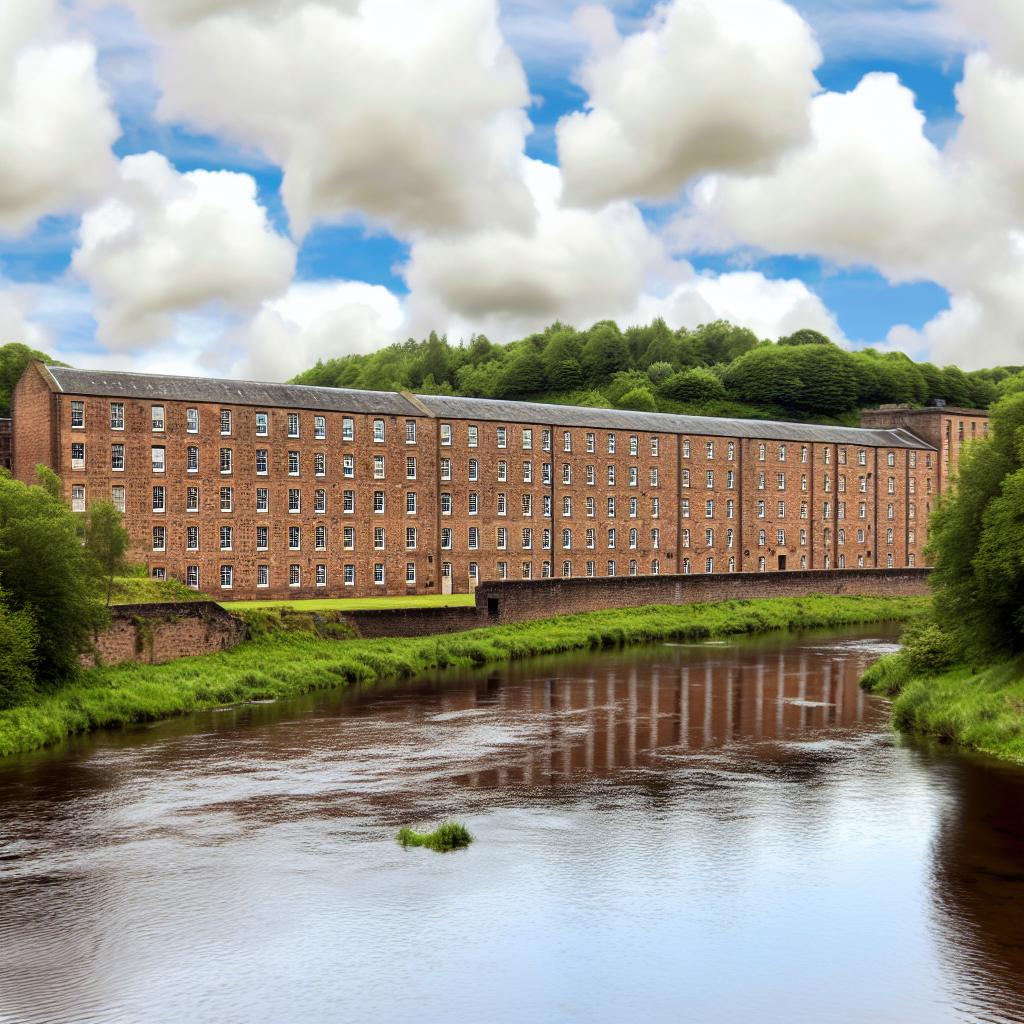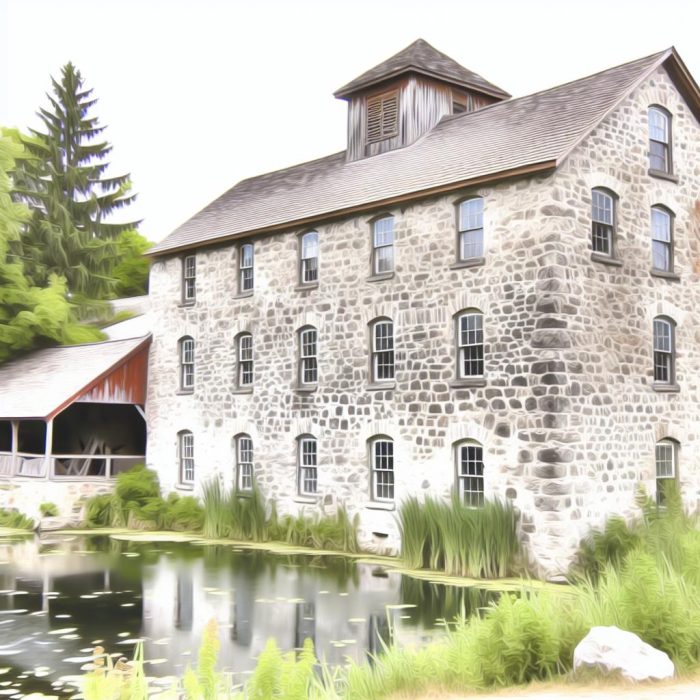Introduction
Located in the scenic village of New Lanark in South Lanarkshire, Scotland, New Lanark Mill stands as a testament to the historical interplay between the cotton industry and social reform. As a UNESCO World Heritage Site, it is a symbol of an era marked by significant changes and advancements. Established in the late 18th century, the mill complex was a pioneering hub during the Industrial Revolution, signifying both industrial growth and progressive societal transformation.
Historical Background
The origin of New Lanark dates back to 1786 when David Dale, a notable Glasgow businessman, realized the potential of harnessing nature for industrial purposes. By partnering with the innovative English inventor, Richard Arkwright, Dale capitalized on the power of the River Clyde’s falls. This natural water source became the backbone of textile production at New Lanark, making it one of the earliest factories in Scotland to employ industrial techniques on a large scale. The strategic use of the river’s energy marked a turning point in the textile industry, demonstrating the feasibility and efficiency of water-powered spinning mills.
Robert Owen and Social Reforms
In the year 1800, Robert Owen took over the management of the New Lanark mills. Owen’s influence significantly altered the social landscape of the working community. Known as a forward-thinking social reformer, Owen envisioned a society where industry and humanity would coexist harmoniously. He implemented a series of progressive social experiments aimed at enriching both the working and living conditions of his mill workers. Under his stewardship, New Lanark evolved into a beacon of social responsibility.
Owen’s vision was manifested through several seminal changes. He reduced the working hours to ensure a healthier work-life balance, provided fair wages which deviated from the exploitative norms of the time, and strictly prohibited child labor for children under ten. Understanding the critical role of education in improving living standards, Owen founded the Institute for the Formation of Character. This was an innovative community education initiative offering lifelong learning opportunities, illustrating Owen’s belief in education as a pathway to societal improvement.
Architectural Layout
The architectural design of New Lanark is characterized by its harmonious integration of functional and communal spaces. This synergy is evident in the thoughtfully laid out complex, which includes the main mill buildings, worker accommodations, educational institutions, and communal facilities such as a cooperative store and a church. The stone edifices are prime examples of 18th and 19th-century industrial architecture, notable for their robustness and enduring state of preservation. The architectural cohesion within the complex facilitated a community-oriented environment, reflecting Owen’s vision of a holistic living and working space.
Modern-Day New Lanark
In the present day, New Lanark has transformed into a thriving tourist attraction that encapsulates the industrial ingenuity and social evolution of its era. Visitors are invited to delve into the rich legacy of the past through the preserved factory buildings, which stand as silent narrators of days gone by, and the well-maintained worker housing that offers a glimpse into the daily lives of those who powered this industrial hub. Educational exhibits are meticulously designed to convey the historical context and the site’s significance in the broader narrative of industrial and social history.
Conservation efforts at New Lanark have been crucial in maintaining its integrity as a heritage site. The work of both conserving the physical structures and interpreting the historical narratives plays a significant role in educating the public about the early industrial era and the advancements in workers’ rights. These initiatives provide a comprehensive educational experience, making New Lanark a vital resource for understanding the socio-economic transformations of the past.
For those interested in further exploring the site or participating in educational programs, the New Lanark Trust’s official website offers a wealth of resources and information on visiting options and tour arrangements.
Conclusion
New Lanark remains an essential historical landmark that embodies the dual legacy of industrial progress and social reform. It serves as an enduring example of how technical innovation, when paired with a commitment to social welfare, can lead to substantial improvements in the quality of life for workers. As a site of historical preservation, New Lanark continues to educate and inspire, reminding us of the possibilities that arise when industrial and social advancements are pursued in tandem.



